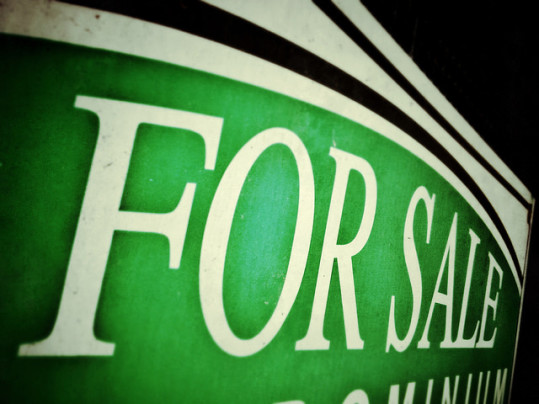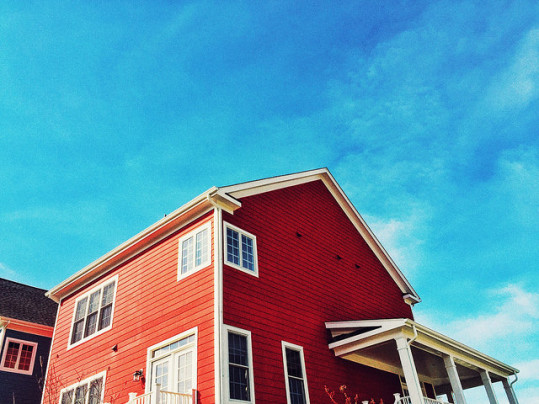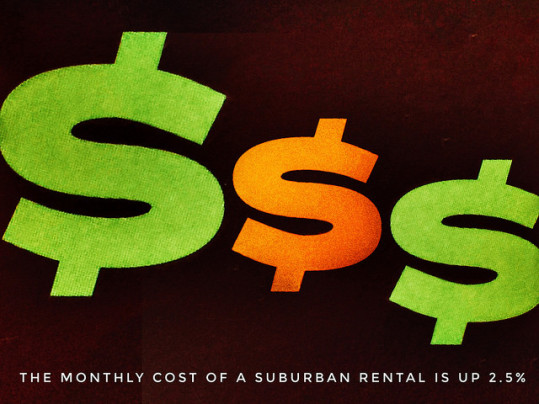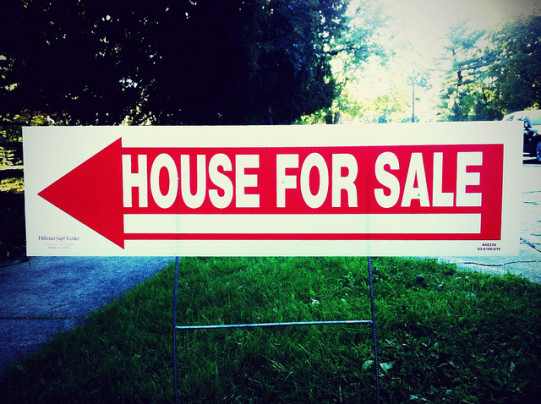Widely seen as the leading measure of U.S. home prices, the S&P Dow Jones Indices is a monthly look at home values that has been conducted for more than 27 years. According to the most recent release, national home prices are up 5.8 percent over last year, with the largest gains seen in the West and South. David M. Blitzer managing director and chairman of the index committee at S&P Dow Jones Indices, says there’s some regional variation in how quickly prices are rising, but generally the issue is the number of homes available for sale. “Over the last year, analysts suggested that one factor pushing prices higher was the unusually low inventory of homes for sale,” Blitzer said in a press release. “People are staying in their homes longer rather than selling and trading up.” Because of this, there are fewer homes for buyers to choose from but home sellers, on the other hand, enjoy increasingly favorable conditions. And yet, many current homeowners are staying put. If more homeowners put their homes up for sale, and new home construction continues to improve, the market will balance in the coming months and home price increases will begin to moderate. More here.
Archive for May 2017
Renovations And The Cost Of Selling
It isn’t just the home’s buyer who has to settle up at the end of the closing process, sellers have costs too. In fact, according to one recent estimate, the average seller spends $15,000 before they hand over the keys to their home’s new owner. A big part of that is closing costs, agent commission, and any repairs required following the home’s inspection. But another chunk of that is renovations done before the sale. In fact, a large majority of homeowners fix up their homes before putting them on the market. Things like having the home painted, cleaned, and staged can add up for the 80 percent of homeowners who decide to spruce things up before showing their house. Nationally, the average cost of home improvements done before selling was $2,650, though that can vary greatly from region to region and is also dependent on the type of work that is done to get the house in shape. Of course, unlike buyers, home sellers have the sale of their home to help cover their costs but – assuming they’re going to buy another home – these expenses will obviously have an effect on how much money they have left over to put toward their next house. More here.
Today’s Typical Home Sells In Less Than A Month
Home buyers are out in large numbers this spring. Proof of that can be found in the most recent sales report from the National Association of Realtors. Their monthly tally of how many previously owned homes sold the month before found that the typical home for sale was on the market for just 29 days in April, down from 34 days the previous month. That’s a strong indication that buyer demand is outpacing the number of homes for sale this spring. And that’s saying something, especially since April saw a 7.2 percent increase in for-sale inventory by the end of the month. In other words, there are more homes coming on the market but still not enough to match the number of interested home buyers. Lawrence Yun, NAR’s chief economist, says affordable homes are going fastest. “Homes in the lower-and mid-market price range are hard to find in most markets, and when one is listed for sale, interest is immediate and multiple offers are nudging the eventual sales prices higher.” But despite the competition, buyers aren’t deterred. In fact, the number of first-time home buyers was up for the month and, a look at regional results, shows existing-home sales are above or even with last year’s results in the South, West, and Midwest. More here.
Mortgage Rates At Lowest Point Since November
According to the Mortgage Bankers Association’s Weekly Applications Survey, average mortgage rates fell to their lowest level since last November this past week. Rates fell across all loan categories, including 30-year fixed-rate mortgages with both conforming and jumbo balances, loans backed by the Federal Housing Administration, and 15-year fixed-rate loans. Naturally, lower rates spurred an increase in the number of current homeowners looking to refinance their loans. Lynn Fisher, vice president of research at the MBA, told CNBC homeowners were quick to take advantage of the drop. “Homeowners took advantage of the 6 basis-point drop in rates,” Fisher said. “Jumbo rates fell even more, sending the average refinance loan size up 5 percent as borrowers with larger loans, who are typically more sensitive to rate changes, moved to refinance.” But though the rate drop led to more refinance activity, demand for purchase loans was relatively flat from the week before. Still, compared to last year at this time, application demand for loans to buy homes is up 3 percent. The MBA’s weekly survey has been conducted since 1990 and covers 75 percent of all retail residential mortgage applications. More here.
New Home Sales Fall After Reaching Recent Peak
Each month, the U.S. Census Bureau and the Department of Housing and Urban Development release an estimate of how many new homes were sold during the previous month. Because it’s an estimate, the month-to-month numbers can be volatile. For example, the most recent residential sales statistics show an 11.4 percent decline in the number of new homes sold in April compared to March. However, a closer look shows that – not only are sales coming off three consecutive months of gains – but March’s estimate was revised upward. In short, last month’s results, though down sharply, are coming off a nearly 10-year high and are about even with where they were at the same time last year. That means, though the numbers may make it look like there is housing trouble ahead, the market is relatively stable and will likely continue along its current path. In fact, economists told ABC News that they believe April’s decline represents a one-month correction and not a warning sign. Also in the report, the median sales price of new homes sold in April was $309,200; the average sales price was $368,300. More here.
Rents Are Increasing In The Suburbs Too
There are two groups commonly associated with renting. One is young people. The other is people living in urban centers. Conjure up an image of the typical renter and you’ll probably end up imagining someone in their 20s living in a downtown apartment building. The suburbs, on the other hand, have been traditionally thought of as the place you move to when you’re ready to settle down and buy a house. However, new numbers tell a different story. In fact, the latest data shows rental costs are actually rising faster in the suburbs than in cities. Why? There are a couple of reasons. First, rent has been rising rapidly in cities for quite a few years now, which is causing people to look outside city limits for a more affordable place to live. Another is a relative lack of rental properties in the surrounding suburbs. Where there are fewer options, potential renters are going to find rising prices. One option for discouraged renters is to compare the costs of homeownership in their area. In many markets, buying is actually a more affordable option or, at the very least, compares favorably. More here.
Three Reasons Homeowners May Be Waiting To Sell
When shopping for a house, you have to choose from the homes that are for sale at the time you’re looking. In other words, unless you’re having a house custom built to your specifications, you’re going to have to make do with what’s on the market now. These days, that’s become more challenging in some areas due to the fact that there aren’t as many homes for sale as is historically normal. So why is that? Well, there are a couple of different factors behind current inventory levels. One is homes that have yet to recover their value. If a homeowner purchased their home just before the housing crash, they may be waiting for prices to reach pre-crash levels before selling. Another is mortgage rates. Many homeowners were able to refinance their loans while rates were low and – though they remain lower than historical norms – these potential sellers fear they won’t be able to get as good a deal, if they move now. Finally, and perhaps most significantly, current homeowners are less likely to put their homes on the market if they feel they won’t be able to find a house they like in their price range. However, despite the factors keeping more homeowners from putting their homes up for sale, there are also some reasons to believe that homeowners who have been waiting may end up selling sooner than later. Among them, surging buyer demand, higher prices, and mortgage rates still hovering near historic lows top the list. More here.







